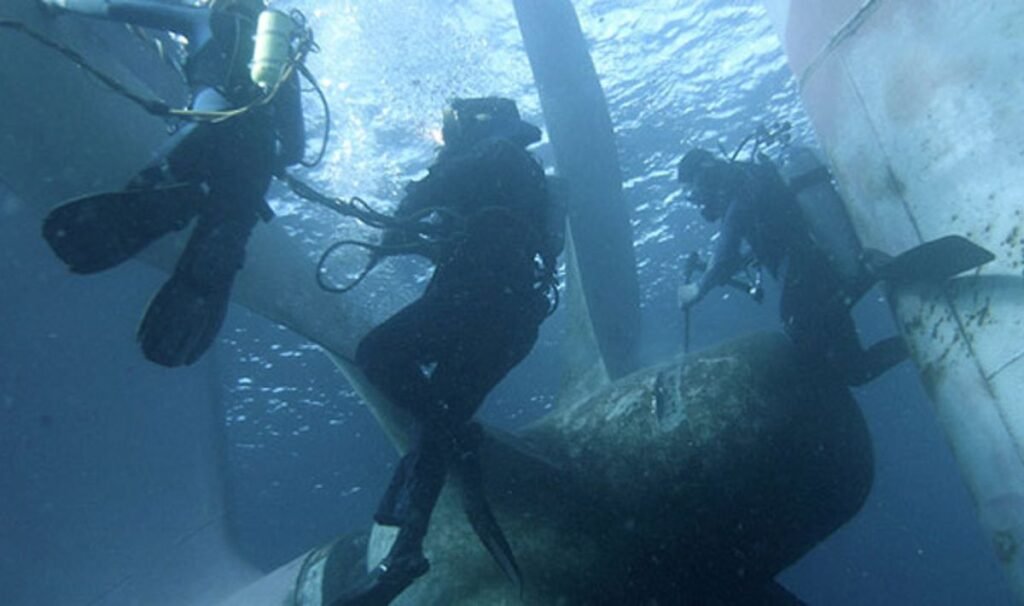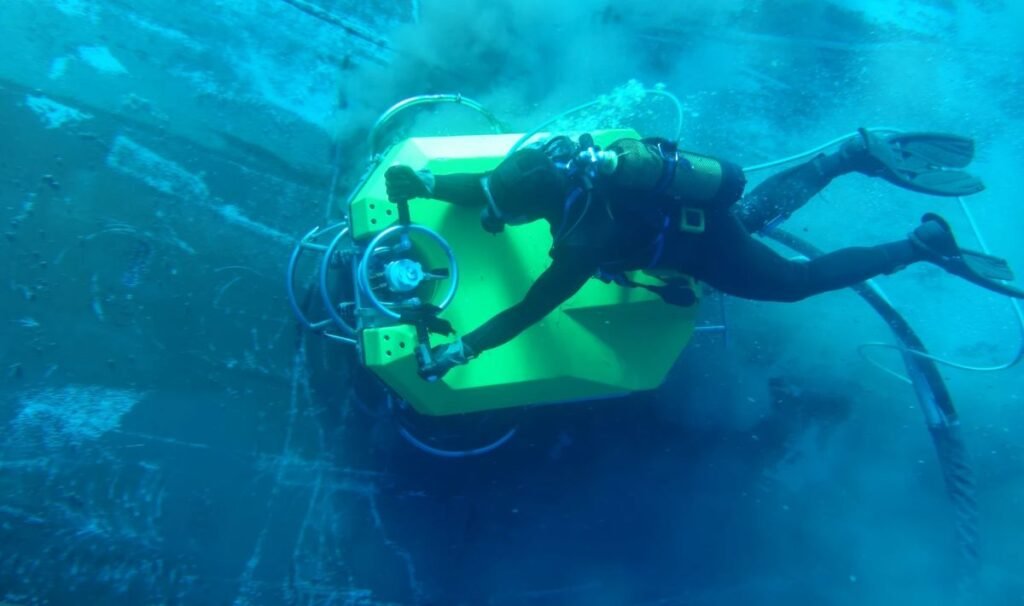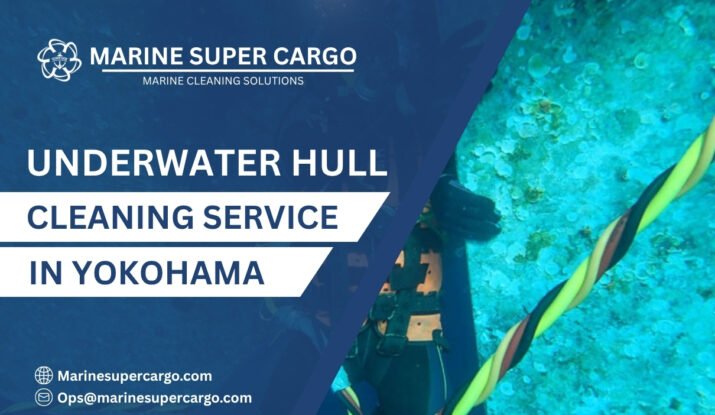Japan’s gateway port, where innovation meets heavy shipping, fishing, and recreational boating. Beneath the city’s skyline, a hidden battle unfolds just under your boat—marine fouling. That’s where underwater hull cleaning in Yokohama makes all the difference, helping you reclaim lost speed, save on fuel, and extend the lifetime of your prized vessel.
This comprehensive 2025 guide will reveal everything you need to know, from the unique fouling challenges of Yokohama’s bustling bay to the latest in eco-friendly, certified hull cleaning practices.
Why Underwater Hull Cleaning in Yokohama Is a Game-Changer for Every Vessel
Picture piloting a race car with sticky mud on every tire. That’s your hull when barnacles, algae, or seaweed take hold. In the nutrient-rich waters of Yokohama, fouling is supercharged—impacting not only how efficiently you move, but also your fuel bills, emissions, and even insurance or regulatory compliance.
Neglecting underwater hull cleaning in Yokohama? Expect:
- Up to 30% higher fuel consumption
- Sluggish, unpredictable handling (especially at low speeds)
- More frequent breakdowns and costly repairs
- Trouble passing port inspections or class society surveys
- Increased risk of invasive species transfer

Yokohama Port: A Dynamic Environment That Supercharges Marine Fouling
At the junction of tidal currents, river discharge, and constant vessel movement, Yokohama fosters accelerated biofouling. In just weeks, hulls can be overtaken by algae, barnacles, and mussels.
While these conditions support fisheries, they severely impact hull efficiency. That’s why regular cleaning aligned with IMO guidelines is essential to maintain performance and compliance.
What Is Underwater Hull Cleaning in Yokohama?
Simply put, underwater hull cleaning in Yokohama is the professional removal—using advanced brushes, scrapers, and sometimes robotic cleaners—of marine fouling from your boat’s submerged surfaces, while it’s still afloat. No need for expensive drydocking or lost time. This includes hulls, props, sea chests, intakes, bilge keels, and even ladder rungs.
How Marine Growth Takes Hold and What You Risk If You Ignore It
It begins subtly—with a thin biofilm of microscopic algae. Soon, barnacles and slime join in, layering your hull with drag-inducing weight and abrasive buildup like invisible sandpaper.
- Higher drag = more engine strain and increased fuel costs
- Fouling secretes acids, eating away expensive paints and exposing metals
- Severe fouling can hide cracks or corrosion, risking safety (and big repair costs)
Core Benefits of Regular Underwater Hull Cleaning in Yokohama
Fuel Savings, Speed, and Smoother Sailing
- A clean hull can restore up to 30% of lost fuel efficiency—money in your pocket on every voyage
- Engines run cooler and quieter, with reduced vibration
- Safer navigation, especially when docking, maneuvering, or responding to emergencies
Extended Hull Life and Environmental Compliance
- Protects anti-fouling paints and running gear far longer
- Early detection of propeller or niche-area problems before they require major repairs
- Many insurance and warranty policies require proof of regular hull cleaning and inspection
- Complies with Japanese and international standards for invasive species and emission controls
Step-by-Step: How Underwater Hull Cleaning in Yokohama Works
Meet the Experts: Divers, Robotics, and Specialized Cleaning Tools
- Top providers use certified divers equipped with high-definition cameras, communication systems, and mechanical rotary brushes
- Robotic “hull shavers” or vacuum-equipped systems are common for large ships
- Detailed inspection before and after cleaning ensures every barnacle is found
- Services often include photographic or video reports for your maintenance log or class society documentation
Eco-Friendly and Regulatory-Compliant Practices
- Mechanical cleaning only—no harsh chemicals
- Debris capture systems and filtered vacuums keep rubbish out of the bay
- Strict approval from the port, the coast guard, and the environmental authorities before every job
- Compliance with standards from Japan as well as Australia/NZ, supporting international voyages
How to Choose the Best Provider of Underwater Hull Cleaning in Yokohama
Certifications, Experience, and Technology
Select providers accredited by top classification societies (NK, LR, ABS, DNV, BV). Prioritize companies with proven experience handling Yokohama’s tidal flows and biofouling challenges. Ensure they offer modern cleaning tools, full inspection reports, and rapid emergency response.
For guidance and local compliance, refer to the Port of Yokohama – Official Website.
DIY vs. Professional Cleaning: Which Is Right for Your Vessel?
DIY cleaning on a tiny pleasure craft may sound fun, but for anything commercial, insured, or with tough fouling, pros are essential for:
- Hull and coating safety
- Complete debris collection
- Class society or insurance compliance
- Accurate reporting and before/after photos
When and How Often Should You Schedule Underwater Hull Cleaning in Yokohama?
- Every 3–6 months is the typical norm for active boats; sooner in spring, summer, or when idle for long stretches
- Speed drops, fuel costs surge, vibration rises, or visible marine growth = time to book
- Pre-voyage, pre-survey, or pre-sale are smart times for an extra cleaning

Understanding Costs and True Value of Underwater Hull Cleaning in Yokohama
- Pricing depends on boat size, fouling level, and extra services (propeller polishing, detailed reporting)
- While rates are higher for commercial or heavily fouled hulls, fuel savings and longer intervals before drydock usually offset the cost
- Ask for transparent, itemized quotes and insurance-ready documentation
Pro Tips to Keep Your Hull Cleaner for Longer Between Cleanings
- Use high-quality anti-fouling paints suited for Yokohama’s marine conditions
- Frequently inspect your vessel’s bottom visually or via underwater camera
- Track speed and fuel use—sudden changes mean it’s time for a check
- Build a relationship with a local certified cleaning provider for hull maintenance reminders and routine care
Conclusion: Set Sail with Confidence and Efficiency in Yokohama Bay
Underwater hull cleaning in Yokohama is more than a task—it’s essential to vessel speed, safety, and value. In one of the busiest ports in the world, regular cleaning with certified professionals pays back every mile in smoother journeys, lower costs, and compliance with the highest global standards. Embrace it, and you’ll leave both competitors and excess expenses in your wake.
FAQ:
Q1. How often should I schedule underwater hull cleaning in Yokohama?
For most vessels, every 3–6 months is optimal. Fouling happens fast in rich port waters, so check for speed or fuel efficiency drops or visible growth to schedule sooner.
Q2. Is underwater hull cleaning in Yokohama safe for the environment?
Yes, when provided by certified pros using mechanical removal and debris capture, in compliance with local port and environmental laws.
Q3. Can I clean my hull, or should I always hire a professional?
DIY may suffice for small, lightly fouled craft, but commercial, insured, or heavily fouled vessels need the expertise, equipment, and compliance of professional services.
Q4. What marine growths are most common in Yokohama?
Algae, barnacles, mussels, and seasonal seaweed thrive in the port’s nutrient-rich, dynamic conditions.
Q5. Does professional hull cleaning help with insurance, resale, or class surveys?
Absolutely—inspection and cleaning records are often required for insurance claims, warranty support, and passing port or class society surveys. Always ask your provider for detailed, photo- or video-supported documentation.


